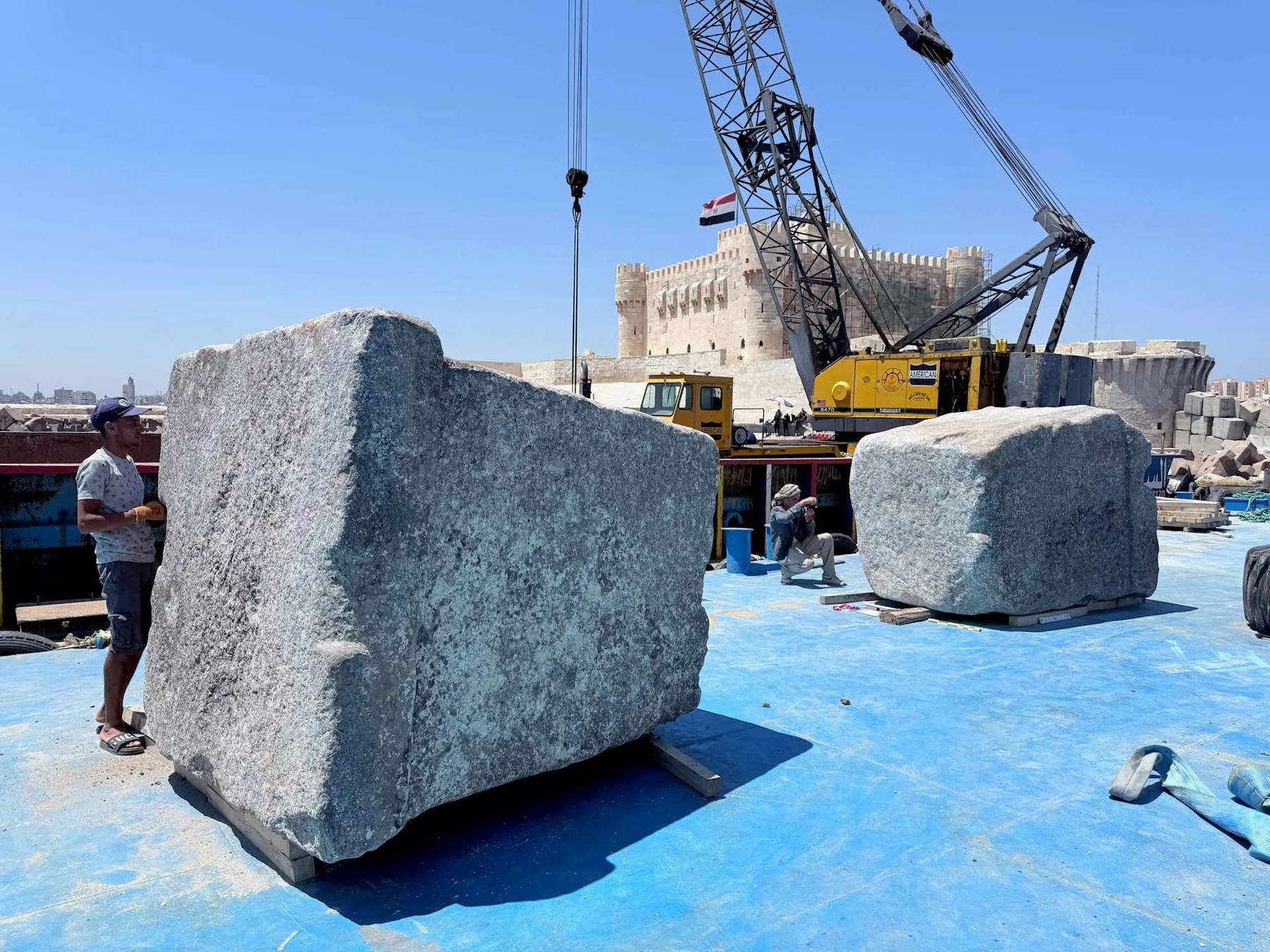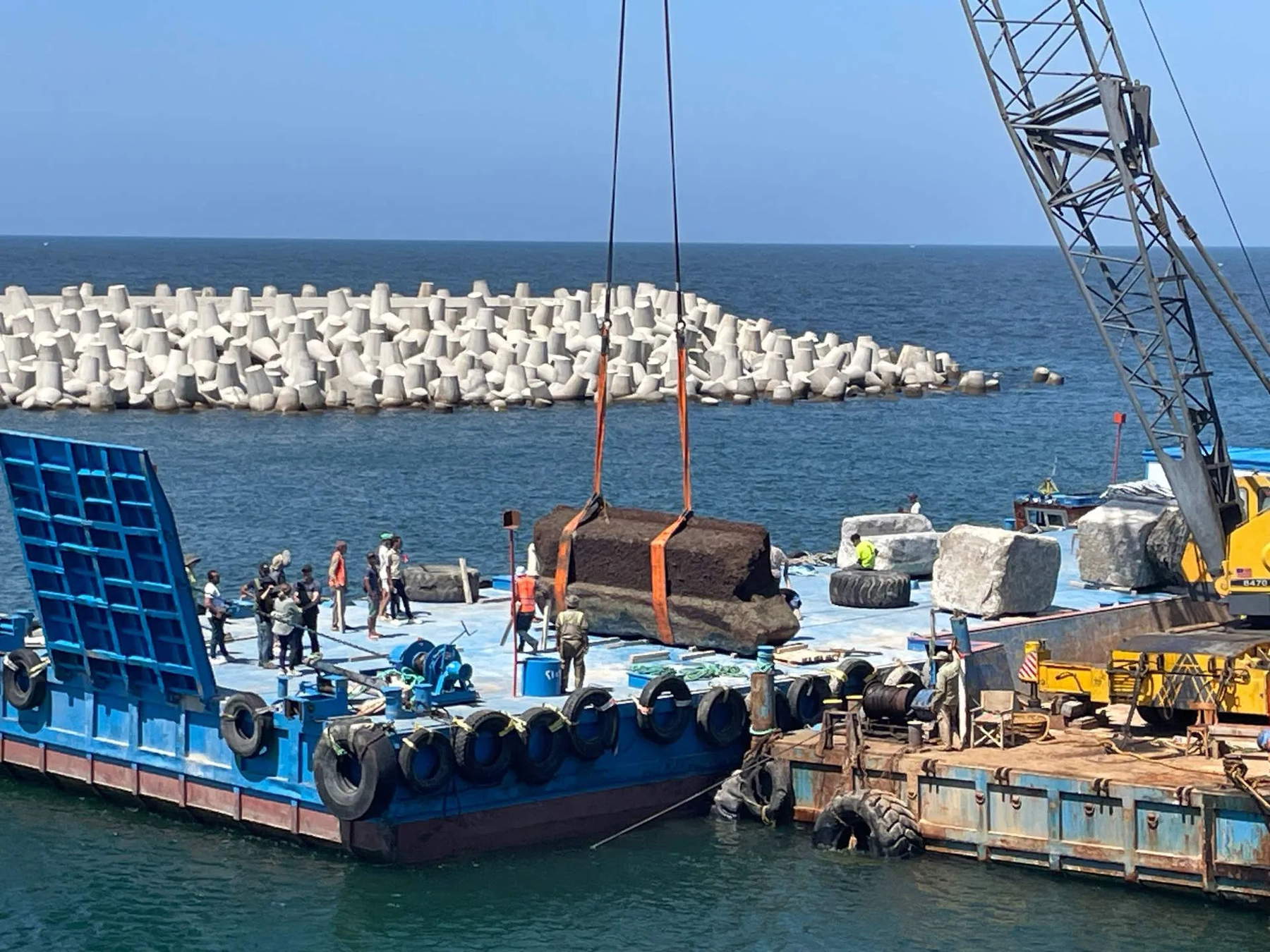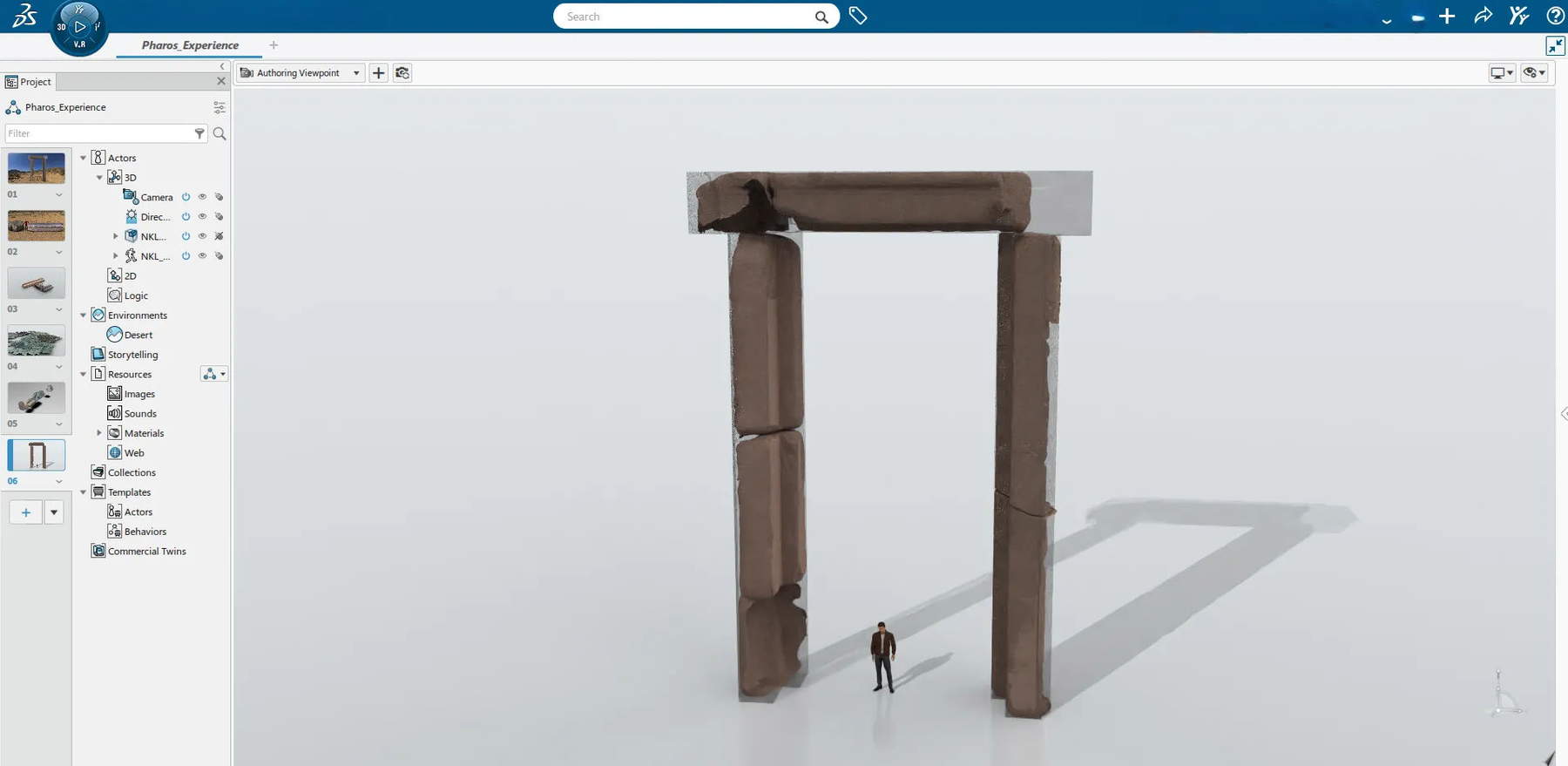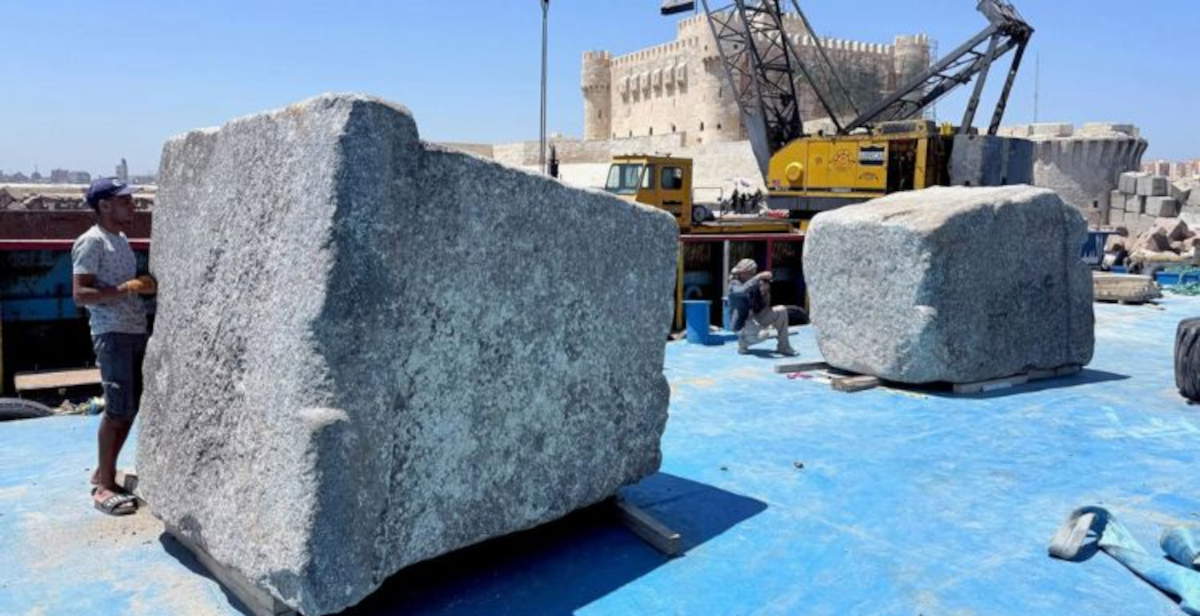Nearly 30 years after the discovery of the submerged remains of the Alexandria Lighthouse, a major archaeological operation is underway: 22 monumental blocks have been brought to the surface from the waters of Egypt’s eastern harbor. These are the most impressive architectural components so far recovered from the historic structure, considered one of the Seven Wonders of the Ancient World.
The work is part of the PHAROS project, an international scientific program coordinated by France ’s Centre national de la recherche scientifique (CNRS) and conducted in the field by the Centre d’Études Alexandrines (CEAlex). Leading the mission is archaeologist and architect Isabelle Hairy, a researcher at CNRS (UMR 8167 - Orient & Méditerranée). The operation is being carried out under the auspices of the Egyptian Ministry of Tourism and Antiquities.
The blocks lifted include monumental door lintels and jambs, thresholds, base slabs, and even an Egyptian-style pillar with a door dating to the hitherto unknown Hellenistic period. Each element, weighing between 70 and 80 tons, was carefully slinged, hoisted and transported for digital scanning. The aim is to include them in a 3D modeling project that aims to reconstruct the entire structure of the lighthouse, which was finally destroyed in the 15th century.

The initiative is the culmination of a decade of underwater scanning that has already enabled the digitization of more than 100 architectural fragments. The new blocks, now available for photogrammetry, will be analyzed by a team of volunteer engineers from Fondation Dassault Systèmes. Using virtual environments and scientific simulations, specialists will in fact try to digitally reassemble the blocks as if they were parts of a huge archaeological puzzle, trying to return a coherent representation of the ancient lighthouse in its original form.
In parallel, the PHAROS project involves scholars from various disciplines, historians, numismatists, archaeologists, and architects, who are collecting and studying ancient descriptions, depictions, and written sources documenting the appearance and function of the lighthouse from the 4th century B.C. until its decline in the 15th century. In fact, the building was gradually dismantled after a violent earthquake in 1303 rendered it unusable. The materials were then reused to build the Qaitbay Fortress, built in 1477 on the same promontory.
The digital reconstruction of the lighthouse is based on the convergence of archaeological, historical and engineering data. The long-term goal is to create a digital reconstruction of the lighthouse that can be explored, allowing researchers and the public to experience standing at the foot of one of the most well-known constructions of antiquity.

Built in the early 3rd century B.C. at the behest of Ptolemy I, the Lighthouse of Alexandria was a tower about 100 meters high, designed to guide ships into the harbor and signal the city’s presence to Mediterranean sailors. It consisted of three superimposed levels: a square base, an octagonal body and a cylindrical top, where it burned fire visible from great distances. It was the first example of a large monumental lighthouse and influenced maritime architecture for centuries until the Middle Ages.
The PHAROS project is also of special value because of the absence of similar preserved structures: no large ancient lighthouse has survived to the present day, which makes any information derived from the Pharos study all the more valuable. Its design, its impact on the urban landscape, and its durability, some 1,600 years, make it unique in architectural history. For many scholars, the Alexandria Lighthouse also represents the first “skyscraper” built by mankind.

Also supporting the mission is GEDEON Programmes, a French production company specializing in historical and scientific documentaries. Already involved in 1995 during the first phase of submarine research, GEDEON co-financed the original CEAlex mission and produced the documentary The Seventh Wonder of the World, which was broadcast by international broadcasters including BBC, RAI, PBS, NHK and ZDF. In 2025, the company returned to support the initiative by funding the barge and crane used for the actual lifting of the blocks. The entire operation was documented by GEDEON Programmes cameras under the direction of Laurence Thiriat. The result will be a 90-minute documentary that will air in prime time on France Télévisions.
 |
| Egypt, blocks of the Lighthouse of Alexandria, one of the Seven Wonders, resurface after 2,300 years |
Warning: the translation into English of the original Italian article was created using automatic tools. We undertake to review all articles, but we do not guarantee the total absence of inaccuracies in the translation due to the program. You can find the original by clicking on the ITA button. If you find any mistake,please contact us.